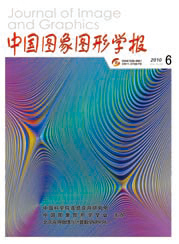
基于空间数据挖掘的分区异步元胞自动机模型研究
柯新利1,2,3, 边馥苓1(1. 武汉大学空间信息与数字工程研究中心, 武汉 430079;2. 中国科学院地理科学与资源研究所, 北京 100101;3. 咸宁学院资源与环境科学学院, 咸宁 437000) 摘 要
传统的元胞自动机模型采用统一的转换规则和相同的演化速率进行演化,忽略了地理现象演变的时空差异性:演化规律的空间异质性和演化速率的空间差异性。针对这一问题,提出了基于空间数据挖掘的分区异步元胞自动机模型,采用双约束空间聚类的方法对元胞空间进行分区,用分区转换规则替代统一转换规则可以体现地理现象演化规律的空间差异性;采用标准格网划分的方法求取异步元胞演化速率,用异步演化速率替代同步演化速率可以体现地理现象演化速率的空间差异性。以杭州市土地利用变化为例对基于空间数据挖掘的分区异步元胞自动机模型进行了实证研究,结果表明:与传统的元胞自动机模型相比,基于空间数据挖掘的分区异步元胞自动机模型具有较高的模拟精度,并且适用于较大区域较长时间段地理现象的动态变化模拟。基于空间数据挖掘的分区异步元胞自动机模型是地理元胞自动机研究的新视角,它将地理现象演变的空间异质性和时间差异性引入到地理元胞自动机模型中,使模型对地理过程的模拟更接近实际地理过程。然而,由于有关分区异步的元胞自动机模型还处于尝试性研究阶段,在元胞空间分区方法、双约束空间聚类算法中权重的确定方法、元胞演化速率的获取方法、元胞转换规则的获取方法、模拟精度评估以及分区异步元胞自动机模型在较大区域较长时间的地理现象模拟中的应用等方面有待进一步的研究与探讨。
关键词
A Partitioned & Asynchronous CA Based on Spatial Data Mining
KE Xinli1,2,3, BIAN Fuling1(1. Spatial Information & Digital Engineer Research Center of Wuhan University, Wuhan 430079;2. Institute of Geographic Science & Natural Resources Research, Chinese Academy of Sciences, Beijing 100101;3. School of Resources & Environment Science, Xiannin) Abstract
In traditional CA, general transfer rule and same speed are used to drive models. In this kind of CA, spatial-temp differences of geographical phenomenon, both transfer rules and transfer speed, are ignored. To solve this problem, a partitioned & asynchronous CA based on spatial data mining is given in this paper. In this model, cell space is departed by dual-constraint spatial cluster and general transfer rule is replaced by partition transfer rule, asynchronous transfer speed is calculated using general grid and synchronous transfer speed is replaced by asynchronous transfer speed. Spatial differences of geographical transfer rule and geographical transfer speed are taken into account in this kind of models. Taking land use change in Hangzhou as a case, partitioned & asynchronous CA based on spatial data mining are implemented in land use. Result shows:comparing with traditional CA, partitioned & asynchronous CA based on spatial data mining can get more accurate simulation result, and this kind of models can be used to simulate geographical phenomenon in a larger area for a comparatively longer time. A new viewpoint of GeoCA is given in partitioned & asynchronous CA. In this kind of Model, spatial differences and temporal diversities are taken account into GeoCA, it makes simulations with this kind of model much closer to actuality. Yet theories and methods of partitioned & asynchronous CA is still in tentative research stage, there are many problems, such as divided methods of cell space, methods of calculating weight of dual-constraint spatial cluster, calculation of cell transfer speed, getting of transfer rules, evaluation of CA result accuracy, and applications of partitioned & asynchronous CA in simulating land use at larger area and during longer time and etc. should be discussed and analyzed.
Keywords
|



 中国图象图形学报 │ 京ICP备05080539号-4 │ 本系统由
中国图象图形学报 │ 京ICP备05080539号-4 │ 本系统由